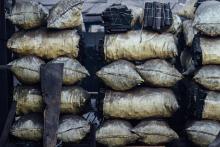Land Library
Welcome to the Land Portal Library. Explore our vast collection of open-access resources (over 74,000) including reports, journal articles, research papers, peer-reviewed publications, legal documents, videos and much more.
/ library resources
Showing items 1 through 9 of 83.Humans have been adapting to their environments throughout history by developing practices, cultures and livelihoods suited to local conditions – from the Mediterranean siesta to the Vietnamese practice of building homes on stilts to protect against monsoonal rains.
Landscape restoration initiatives often have the potential to result in environmental gains, but the question of whether these gains are sustainable and how they are linked to other community needs (social, productivity and economic gains) remains unclear.
Despite increasing sustainable agricultural intensification (SAI) investments, indicators for detecting gender and intergenerational inequities in SAI costs and benefits sharing often remain overgeneralized, theoretical, or locally irrelevant.
This study was conducted in Lake Hawassa catchment, Ethiopia where policy programs are aiming to restore degraded lands with participation of local stakeholders.
The climate services that are available to farmers and other agricultural value chain actors are quite heterogeneous across sub-Saharan African countries.
In almost all forms of agriculture and farming practice, land clearing is the initial step. In Indonesia, in general, the most cost effective means of clearing land is through the use of fire.
This study estimates that Sustainable Seeds Systems for the Global South received approximately USD 15 billion in funding cumulatively between 2010-2019 across all sources of funders. This is roughly one-third the total funding for seeds innovation in the same time period.
The Central African forest ebony, Diospyros crassiflora Hiern, is a small tree native to the moist forests of the Congo Basin.
Potato plays an important role in Kenya’s food and nutrition security plan - part of the Big Four
Economic Development Strategy. The crop is cultivated by approximately 800,000 smallholder farmers


